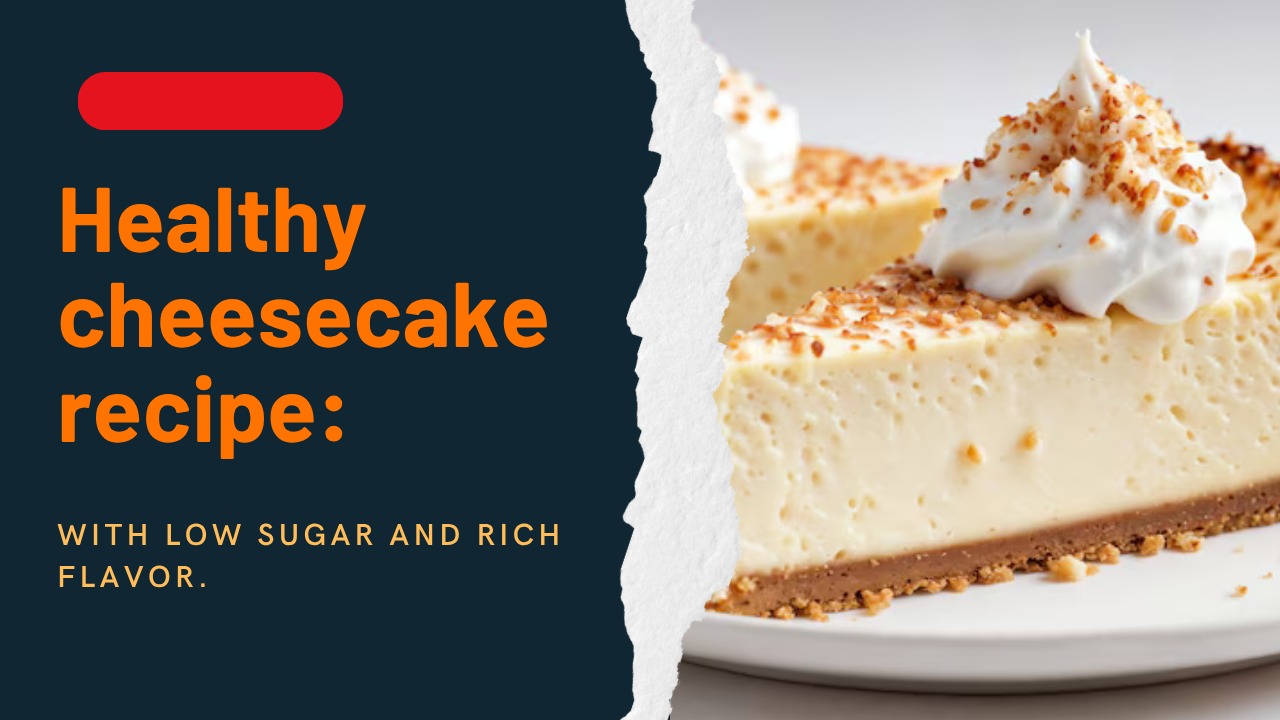Healthy cheesecake recipe lovers rejoice! This guilt-free twist on the classic dessert offers all the creamy richness and flavor you crave without the heavy calories. By using smart swaps like Greek yogurt, low-fat cream cheese, and natural sweeteners, you can enjoy a wholesome treat that supports your health goals.
Traditional cheesecakes often come loaded with refined sugars and saturated fats. This healthy version cuts down on both, while still delivering a smooth, melt-in-your-mouth experience. Even the crust can be made healthier by using oats, almond flour, or crushed nuts in place of graham crackers.
Whether you’re watching your sugar intake, counting calories, or just trying to make smarter dessert choices, this healthy cheesecake recipe fits perfectly into a balanced lifestyle. It’s a great option for family gatherings, special occasions, or a weekend treat—minus the guilt. You won’t miss the original once you taste this better-for-you version!
In this article, we’ll guide you through creating a healthy cheesecake that doesn’t compromise on taste. From its ingredients to preparation tips, we’ll cover everything you need to know to create this delicious dessert in a way that’s better for your health. We’ll also highlight the benefits of choosing a healthier version of this treat and provide tips on how to make your healthy cheesecake recipe even better.
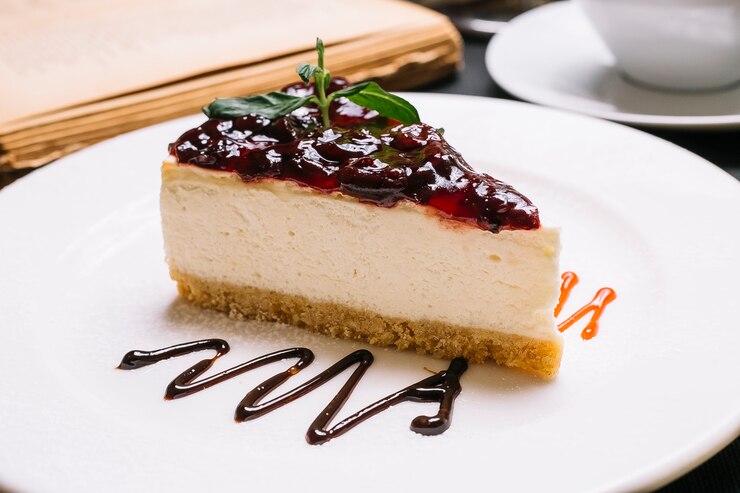
What is Healthy Cheesecake ?
Healthy cheesecake recipe options offer a delicious way to indulge without the guilt. These lighter versions swap out high-fat, high-sugar ingredients for nutritious alternatives that still deliver on taste and texture. By using ingredients like Greek yogurt, cottage cheese, and low-fat cream cheese, you maintain that rich creaminess while reducing saturated fat and calories.
Natural sweeteners such as honey, maple syrup, or stevia replace refined sugars, offering a more wholesome sweetness. These alternatives also help manage blood sugar levels better, making the cheesecake suitable for those mindful of their sugar intake. Pair these with a crust made from oats, almond flour, or crushed nuts to boost fiber and nutrients.
What makes a healthy cheesecake recipe truly stand out is its ability to balance indulgence and nutrition. Whether you’re serving guests or enjoying a slice yourself, it satisfies dessert cravings while supporting a healthier lifestyle—perfect for mindful eaters who don’t want to compromise on flavor.
Why Should You Make a Healthy Cheesecake ?
If you’re watching your calories, trying to cut down on sugar, or just aiming for a more balanced diet, a healthy cheesecake recipe can be a great option. Traditional cheesecakes are often loaded with sugar, cream cheese, and refined flour, all of which can contribute to weight gain, blood sugar spikes, and unhealthy cholesterol levels.
Opting for healthier alternatives can:
Reduce calorie intake while still enjoying a delicious treat
Support weight management by using ingredients that are lower in fat and sugar
Provide beneficial nutrients like protein from Greek yogurt or calcium from healthier dairy options
Help stabilize blood sugar levels by replacing refined sugar with natural sweeteners
When is it Ideal to Make a Healthy Cheesecake ?
A healthy cheesecake recipe is perfect for any occasion where you want to indulge without going overboard on your health goals. Whether it’s a holiday, a birthday celebration, or simply a weeknight craving, you can enjoy a slice of cheesecake without compromising your wellness. It’s also a fantastic treat to serve at gatherings where guests may have dietary restrictions or health-conscious preferences.
How to Make a Healthy Cheesecake
Healthy cheesecake recipe creation starts with a few smart ingredient swaps that boost nutrition while keeping the flavor rich and satisfying. Traditional cheesecakes are often loaded with refined sugar, full-fat cream cheese, and buttery crusts, but you can make healthier choices without compromising taste.
Begin by replacing full-fat cream cheese with Greek yogurt, low-fat cream cheese, or blended cottage cheese. These options are lower in fat and higher in protein, making your cheesecake more balanced. Instead of using a graham cracker crust, try almond flour, oats, or crushed nuts mixed with a natural sweetener for added fiber and nutrients.
To further lighten your healthy cheesecake recipe, use natural sweeteners like honey, maple syrup, or stevia in place of white sugar. Topping your cheesecake with fresh fruits adds both color and a nutritional boost. With these simple changes, you can enjoy a creamy, indulgent dessert that aligns with your wellness goals.
Here are the key components of a healthy cheesecake recipe:
Crust: Instead of using a store-bought graham cracker crust, use whole grain oats, nuts, or even dates for a healthier, nutrient-rich base.
Filling: Replace high-fat cream cheese with Greek yogurt or cottage cheese for a creamy texture with more protein and fewer calories. You can also use low-fat cream cheese for a balance between creaminess and lower fat content.
Sweeteners: Skip refined sugars and opt for natural sweeteners like honey, maple syrup, or stevia. These alternatives add sweetness without the blood sugar spikes.
Flavoring: Use natural flavorings such as vanilla extract or lemon zest for a fresh, vibrant taste.
By making these small tweaks, you can still enjoy the rich, creamy goodness of cheesecake while also nourishing your body.
Top Tips for a Healthy Cheesecake Recipe
Opt for Greek Yogurt or Cottage Cheese for Protein
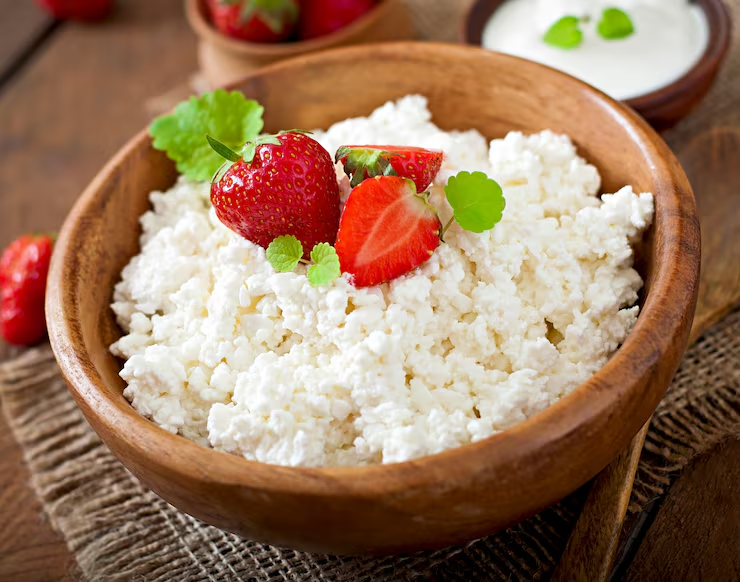
Healthy cheesecake recipe enthusiasts can boost their dessert’s nutritional value by opting for protein-rich ingredients like Greek yogurt or cottage cheese. These swaps not only reduce the fat content but also add a creamy texture and tangy flavor that complements the classic cheesecake taste beautifully.
Greek yogurt is an excellent alternative to traditional cream cheese. It’s thick, rich in probiotics, and packed with protein, making it a smart choice for those aiming to stay full longer. Similarly, cottage cheese brings a light, fluffy texture and blends smoothly when pureed, helping create a lower-calorie yet satisfying dessert.
By using either Greek yogurt or cottage cheese in your healthy cheesecake recipe, you’re not only cutting back on unnecessary calories but also enhancing the dish’s overall nutrition. These ingredients are especially ideal for fitness enthusiasts or anyone looking to enjoy dessert while maintaining a high-protein diet. Enjoy the best of both taste and health!
Benefit: Greek yogurt and cottage cheese are high in protein, which will keep you feeling full longer and promote muscle repair and growth. They also add creaminess to the cheesecake, providing the same texture as cream cheese but with fewer calories and fat.
Use Almond or Oat Crust Instead of Graham Crackers
Healthy cheesecake recipe variations often start with a smarter crust, and swapping out graham crackers for almond or oat-based crusts is a simple yet impactful change. Traditional graham cracker crusts typically contain added sugars and processed ingredients that can spike calories quickly.
An almond crust, made with almond flour and a touch of coconut oil or honey, offers a nutty flavor and healthy fats that support heart health. It’s also naturally gluten-free and low in carbs, making it ideal for keto or low-carb diets. Similarly, oats provide a wholesome, fiber-rich alternative that adds a subtle crunch and keeps you feeling satisfied longer.
Incorporating an almond or oat crust into your healthy cheesecake recipe gives you a nutrient-dense foundation without sacrificing taste. These crusts complement the creamy filling beautifully and allow you to enjoy your dessert with more peace of mind. It’s a delicious upgrade your body and taste buds will thank you for!
Benefit: By using nuts like almonds or whole oats for the crust, you’re adding fiber, healthy fats, and additional nutrients. These crusts are gluten-free and provide a crunchy texture without the added sugars or refined grains found in graham crackers.
Sweeten with Natural Sugars
Healthy cheesecake recipe options don’t have to rely on refined sugar to be delicious. One of the best ways to lighten up your dessert is by sweetening it with natural sugars like honey, maple syrup, or dates. These alternatives provide a rich, complex sweetness while also offering trace nutrients and antioxidants.
Honey and maple syrup blend smoothly into the cheesecake filling and pair perfectly with ingredients like Greek yogurt or low-fat cream cheese. Medjool dates, when blended, create a caramel-like texture that works wonderfully in both the crust and filling. These natural sweeteners also have a lower glycemic index, making them a better choice for blood sugar control.
By choosing natural sugars, your healthy cheesecake recipe becomes a more wholesome indulgence. You get the flavor you love without the empty calories of white sugar. It’s a small change with a big payoff—delicious taste, added nutrition, and guilt-free enjoyment.
Benefit: Using natural sweeteners like honey, maple syrup, or stevia helps avoid blood sugar spikes that come from refined sugars. Natural sweeteners are metabolized more slowly, preventing a sugar crash and offering a more balanced sweetness.
Add Fresh Fruit for Extra Flavor and Nutrition
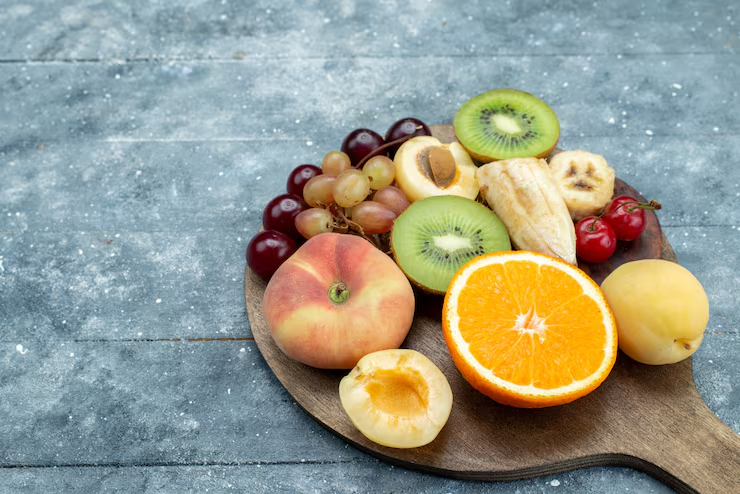
Healthy cheesecake recipe lovers can elevate both flavor and nutrition by adding fresh fruit to their dessert. Fruits like berries, mango, kiwi, or sliced peaches not only enhance the visual appeal but also provide natural sweetness, fiber, and essential vitamins.
Berries are especially popular because they’re low in calories yet packed with antioxidants. Whether you mix them into the filling or use them as a topping, strawberries, blueberries, or raspberries add a bright, tangy contrast to the creamy base. Mango and peach slices bring a tropical twist that pairs beautifully with light cheesecake flavors.
Including fresh fruit in your healthy cheesecake recipe is an easy way to cut back on processed toppings and sugar-laden syrups. It also makes your dessert more refreshing and satisfying. Whether you’re serving guests or enjoying a slice solo, fruit-topped cheesecake is a smart and flavorful way to stay on track with your health goals.
Benefit: Fresh fruits like berries, mangoes, or kiwi not only enhance the flavor of your cheesecake but also increase its vitamin and antioxidant content. Fruits provide natural sweetness and reduce the need for excessive added sugar.
Use a Low-Calorie Sweetener for a Sugar-Free Option
Healthy cheesecake recipe alternatives can be easily made sugar-free by using low-calorie sweeteners. These sugar substitutes, such as stevia, erythritol, or monk fruit, provide the sweetness you crave without the extra calories or blood sugar spikes of traditional sugar.
Stevia and monk fruit are plant-based sweeteners that blend well into cheesecake batters, offering a clean, sweet flavor without a bitter aftertaste. Erythritol, a sugar alcohol, is another popular option that measures like sugar and works well in both crusts and fillings. These alternatives are especially useful for people with diabetes or those following low-carb or keto diets.
By replacing refined sugar with a low-calorie sweetener, your healthy cheesecake recipe becomes even more diet-friendly while still tasting indulgent. It’s a smart way to enjoy a delicious dessert without derailing your health goals. This small switch lets you have your cheesecake and eat it too—guilt-free and full of flavor.
Benefit: If you’re aiming for a sugar-free cheesecake, low-calorie sweeteners like stevia or monk fruit are excellent alternatives. These sweeteners have no calories and won’t affect your blood sugar levels, making them ideal for those managing diabetes or simply watching their sugar intake.
Incorporate Healthy Fats like Avocado or Nut Butter
Healthy cheesecake recipe variations can be made even more nutritious by incorporating healthy fats like avocado or nut butter. These ingredients not only add a rich, creamy texture but also supply essential nutrients and heart-healthy fats that support overall wellness.
Avocado, when blended, becomes silky smooth and neutral in flavor, making it an excellent substitute for part of the cream cheese or sour cream. It adds fiber, potassium, and monounsaturated fats, which help support brain and heart health. Nut butters like almond or cashew bring a naturally sweet, nutty flavor while providing protein and vitamin E.
Adding healthy fats to your healthy cheesecake recipe is a smart way to enhance both taste and nutritional value. These ingredients keep you feeling full longer and reduce the need for processed fats. The result is a balanced, creamy dessert that satisfies your sweet tooth while nourishing your body—a true win-win treat.
Benefit: Avocado or nut butters such as almond butter can replace the heavy fats in traditional cheesecakes. These fats are heart-healthy and can help make your cheesecake extra creamy, without the guilt of saturated fats.
Chill for a Perfect Set

Healthy cheesecake recipe success depends not only on ingredients but also on proper chilling. Letting your cheesecake chill thoroughly ensures it sets perfectly, giving it the smooth, firm texture that makes every bite delightful.
After baking or assembling your no-bake version, allow the cheesecake to cool at room temperature first, then refrigerate it for at least 4–6 hours—or preferably overnight. This helps the filling solidify and enhances the flavor as all ingredients meld together. Rushing this step can lead to a runny or uneven consistency.
Chilling is especially crucial in a healthy cheesecake recipe, where lighter ingredients like Greek yogurt or reduced-fat cream cheese may need extra time to firm up. Be patient, and you’ll be rewarded with a delicious, sliceable dessert that holds its shape beautifully. It’s the final step that transforms your wholesome ingredients into a truly satisfying, guilt-free indulgence.
Benefit: To get the perfect texture, refrigerate your healthy cheesecake for several hours or overnight. Chilling helps the cheesecake firm up, making it easier to slice while maintaining a smooth, creamy consistency.
Control Portion Sizes
Healthy cheesecake recipe options are a great way to enjoy dessert without guilt, but even wholesome treats benefit from portion control. Eating smaller slices allows you to savor the flavor while keeping your calorie intake in check.
You can easily control portions by using mini cheesecake molds or cutting standard-size cheesecakes into smaller slices. This helps prevent overeating, especially since cheesecake—healthy or not—can still be calorie-dense. Serving it in small ramekins or cupcake liners also makes it easier to enjoy a treat without going overboard.
Even with nutritious ingredients, mindful eating is key to making your healthy cheesecake recipe part of a balanced diet. Enjoying a modest slice not only satisfies your sweet tooth but also supports your health and wellness goals. By being conscious of portion sizes, you can indulge regularly without compromising your commitment to smarter eating habits.
Benefit: Even though this cheesecake is healthier than traditional versions, it’s important to practice portion control. A small slice will satisfy your sweet tooth without overindulging. Moderation is key to enjoying a healthier lifestyle while still indulging in desserts.
Healthy Cheesecake Recipe: Ingredients
For the crust:
1 cup almonds or oat flour (for gluten-free options)
2 tablespoons coconut oil or almond butter
1 tablespoon honey or maple syrup
Pinch of salt
For the filling:
2 cups Greek yogurt (full-fat or low-fat, depending on preference)
1 cup low-fat cream cheese (or cottage cheese for a lighter option)
3 tablespoons honey or maple syrup (or preferred sweetener)
1 teaspoon vanilla extract
1 tablespoon lemon juice
1/4 cup coconut flour or cornstarch (for texture)
For garnish:
Fresh berries (strawberries, blueberries, raspberries)
A drizzle of honey or agave syrup (optional)
Conclusion
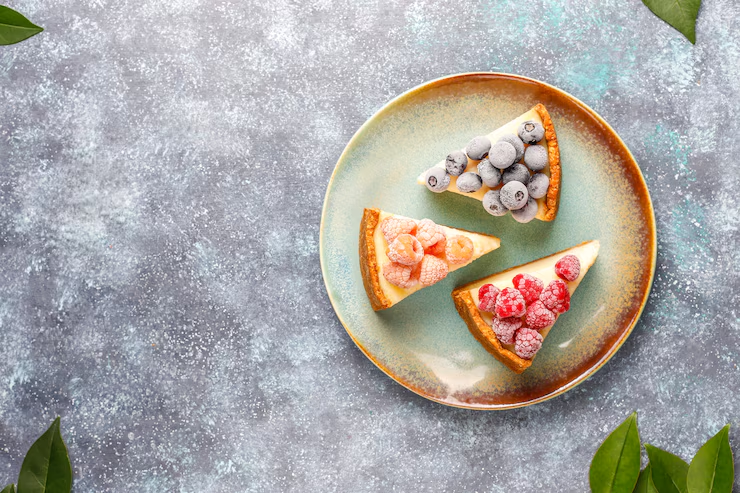
A healthy cheesecake recipe is a wonderful way to indulge in a beloved dessert while keeping health and nutrition in mind. By making small, intentional swaps in ingredients—such as using Greek yogurt, natural sweeteners, and almond crust—you can create a dessert that’s not only delicious but also nourishing. Whether you’re serving it for a special occasion or as a regular part of your diet, this healthier version of cheesecake offers the same indulgence without the excess sugar and fat.
In conclusion, if you want to enjoy a cheesecake without the guilt, it’s all about choosing the right ingredients. The healthy cheesecake recipe provides a balanced combination of flavor, nutrition, and satisfaction, making it a perfect choice for anyone looking to maintain a healthier lifestyle. So why not try out this healthy alternative the next time you’re craving a sweet treat? Your taste buds and your body will thank you!
FAQs
Q1. Can I use dairy-free ingredients for a healthy cheesecake ?
Yes, you can easily make a dairy-free healthy cheesecake by using coconut yogurt and dairy-free cream cheese alternatives. You can also use almond milk or oat milk to adjust the texture and consistency.
Q2. How can I make a no-bake healthy cheesecake ?
Simply omit the baking step and chill the cheesecake in the refrigerator. The ingredients like Greek yogurt and coconut flour will set naturally in the fridge without the need for heat.
Q3. Is it possible to make a healthy cheesecake without sweeteners ?
Absolutely! If you prefer to avoid sweeteners altogether, you can rely on the natural sweetness of fresh fruits like berries or dates, or skip the sweeteners if you like a more tangy flavor.
Q4. Can I freeze a healthy cheesecake ?
Yes, you can freeze healthy cheesecake. Just ensure it’s well-covered with plastic wrap or placed in an airtight container to prevent freezer burn. When ready to serve, allow it to thaw in the fridge overnight.
Q5. How do I know when my healthy cheesecake is set properly ?
A properly set cheesecake will feel firm but slightly soft to the touch. The center should be slightly jiggly but not liquid. Be sure to chill the cheesecake for at least 4 hours for best results.

